Help! My Baby Won’t Burp!
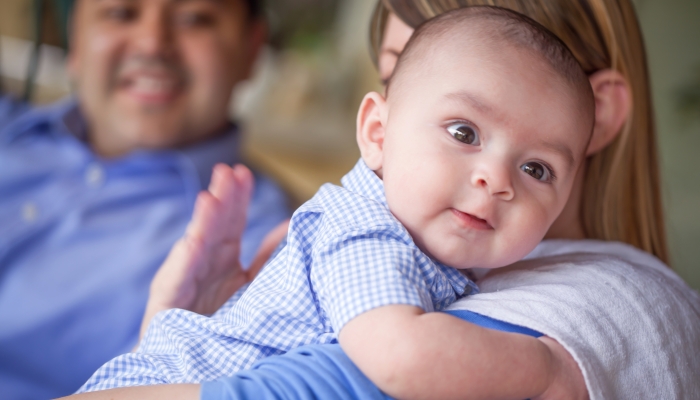
- You should try to burp your baby both during and after a feed.
- There are many different burping positions, and you may have to experiment to find the best one for your baby.
- Not all babies need to be burped—if your baby won’t burp but is content, don’t worry.
Before becoming a parent, it might’ve been difficult to believe how happy hearing an enormous burp might make you. But once you know that an adorable baby belch will guarantee you a nice, long nap or a tear-free night, it easily becomes one of the best sounds of parenthood.
However, burping babies isn’t foolproof, and you might find that your baby won’t burp! It could be that they just don’t need to. But if the bubbles are causing discomfort, you might want to give these helpful tips and different burping methods a try.
What Does it Mean When a Baby Won’t Burp?
All babies are different. Some need frequent burping and others seem to get by just fine without it. If your baby won’t burp, it’s likely due to one of the following reasons:
- Your baby hasn’t swallowed much air. Some babies are very efficient feeders and avoid gulping down too much air during a feed.
- Your baby has released any extra air by passing gas instead. Healthy infants pass gas between 13 and 21 times a day! Sometimes this is enough to let out any of that troublesome trapped air, and they won’t need to be burped.
- Your baby’s body isn’t in the right position to let the burp escape. To be able to burp, your baby needs to be in a slightly upright position so the bubbles can rise. If your little one feeds lying down, the burp won’t be able to get out and will become stuck.
- Your baby is too sleepy to burp. Most babies fall asleep during a feed. It’s the irresistible combination of cuddles and the soothing sucking motion. Unfortunately, they don’t often fall asleep in a good burping position, and the last thing you’ll want to do is wake your sleeping baby! However, there are some great positions that can work without waking them, like lying on your chest or placing them over your forearm.
Is it Bad if My Baby Won’t Burp?
If your baby won’t burp, it’s not always a bad thing. Don’t worry as long as they seem content and sleep well after a feed. It’s likely they didn’t take in much air, and any excess bubbles that are made in their tummy will be passed as gas. A 2014 study found that burping a baby doesn’t reduce colic, indicating that it’s not always as necessary as we think.
However, if your baby shows one or more of the following signs, it may be that they have some trapped wind that’s causing them discomfort. If that’s the case, burping might help.
- Fussing during a feed or pulling off the breast or bottle
- Has a hard, bloated tummy
- Cries and pulls their legs up to their tummy
- Cries until their face turns red
- Isn’t gaining weight because they aren’t taking in enough calories during feeds
These can also be signs of other conditions such as reflux, allergies, or digestive issues. So see your pediatrician if you’re worried or see no improvement even after getting your baby to burp after feeding.
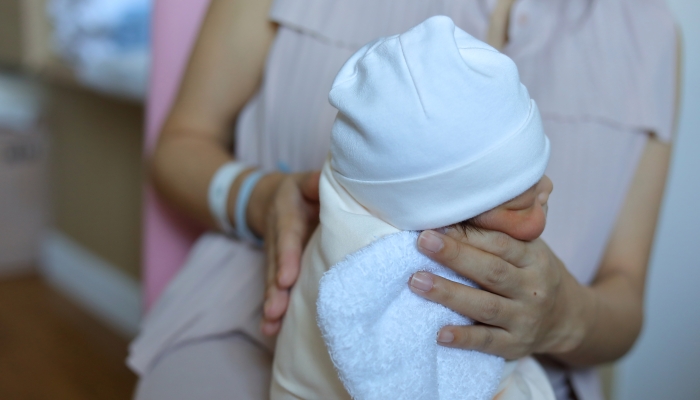
How to Burp a Baby
To burp your baby, you’ll need to put them into a semi-upright position that applies slight pressure to their tummy. There are lots of different positions that achieve this comfortably, so you may need to try out a few before you find the right fit for your little one. Whichever you choose, make sure you prepare for their burping session by covering your clothes with a cloth to catch any spit up.
Over Your Shoulder
Hold your baby upright on your chest with their head resting on your shoulder, making sure there’s no pressure on their throat. Support their body with one hand while you gently rub or pat their back to get the air bubble out.
On Your Chest
Hold your baby in an upright position against your chest with their head turned to the side. Support them with one hand while gently rubbing or patting their back with the other. They may pull their legs up into a frog position, which is great since it might help them pass gas too.
Sitting Upright
Hold your baby upright in a sitting position on your knee facing to your side. Support them with your palm on their chest and your fingers around their jaw, taking care not to put any pressure on their throat. Allow them to lean slightly forward as you use your other hand to rub or gently pat their back and release the air bubbles.
Over Your Lap
Lie your baby, belly down, across your lap, making sure their head is slightly higher than their body. Support their chin with one hand, again making sure there’s no pressure on their throat. Now rock your legs gently side to side or rub and pat their back.
Over Your Forearm
Lay your baby on your forearm face down, with their legs dangling on either side. Their head should rest in the crook of your elbow and be turned to one side. With your other hand, rub and pat their back or stand and rock them slowly. This is a great position to avoid waking them after bottle or breastfeeding.
What’s the Best Way to Pat?
When patting your baby, use a cupped hand instead of a flat palm—it’s gentler, and they’ll find it more comfortable. Try it out on your own arm, and you should be able to feel the difference. Gently pat them either between the shoulder blades or lower down, directly behind their tummy. Experiment to see which works best for your baby.
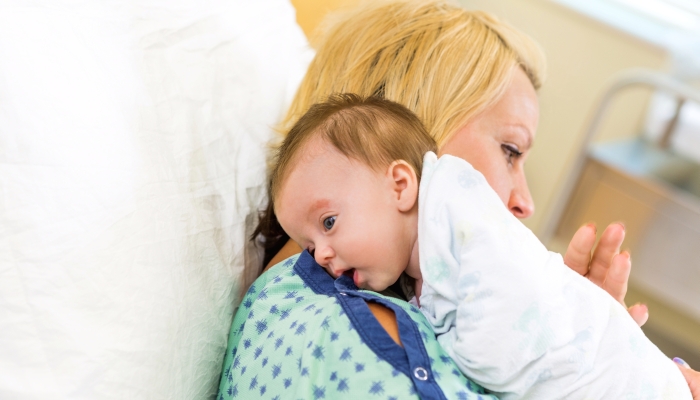
When Should I Burp My Baby?
You should burp your baby both during and after a feed. For breastfed babies, burp once in the middle when switching breasts and once again at the end. Bottle-fed babies typically take in a little more air, so it’s recommended to try for a burp every 2-3 ounces and again after the bottle is finished.
However, all babies are different, and some won’t take in as much air as others. The amount can be affected by their latch, feeding position, type of bottle, and even the strength of their sucking. You may find your baby needs more or less burping than average.
Figure out your baby’s ideal burping routine by paying attention to when the burps come easily and when they don’t. If your baby starts to fuss during a feed and pulls off the breast or bottle, try to burp them. If you’re burping often and they seem annoyed by having their feeding interrupted, try less frequently. Remember, your baby may not need burping at all.
How Long Should I Try Burping My Baby?
Try burping your baby for 2 minutes at a time both during and after a feed. If after a few minutes your little one hasn’t managed a good burp, it’s probably not ready to come up yet. Lay baby down in their crib or for a diaper change for 5 minutes and then try again.
How to Prevent Excess Gas in Babies
If your baby is tricky to burp, or burping is waking them when you could really use a sleepy milk nap, then there are ways to prevent too much building up gas in the first place.
For Breastfed Babies
- Ensure that their latch is good. There should be little to no areola visible, your baby’s chin should be touching your breast, their lips should be turned outward like a fish, and their ears should wiggle as they suck. When in doubt, contact a lactation consultant to check the latch for you.
- Take notice of what you’re eating and drinking to see if it’s impacting your baby’s tummy. Foods including citrus fruits, chocolate, and dairy can sometimes cause issues. However, there is limited research on the relationship between a mother’s diet and their baby’s gassiness. Avoid putting yourself on a severe or overly restrictive diet while breastfeeding.
- Check if your baby’s head is higher than their body when nursing. You may need to try a few different breastfeeding positions until you find the best one for you both.
For Bottle-fed Babies
- Present the bottle in a horizontal position. Babies tend to drink too fast and risk overfeeding when bottle-fed laying down with an upright bottle. Instead, let your baby sit up and give the bottle in a horizontal position.
- Check the milk flow. Babies often take in too much air when the milk flow is too fast. Try switching to a widemouth, slower flow nipple to prevent this.
- Ensure your baby’s head is above their body when they’re feeding. Use a cushion or nursing pillow to help find a comfy position.
- Allow breaks in nursing. Don’t let your baby guzzle down milk. Encourage breaks every few ounces and practice “paced” bottle feeding.
What Should I Try Next If My Baby’s Still Struggling With Gas?
If you’re still struggling to burp baby, there are medications available. It’s best to avoid over-the-counter gas drops and products like gripe water. These don’t undergo the rigorous testing of prescribed medications, and there’s little evidence that they work. Instead, visit your baby’s pediatrician—they may prescribe simethicone or something similar to help your baby feel more comfortable.
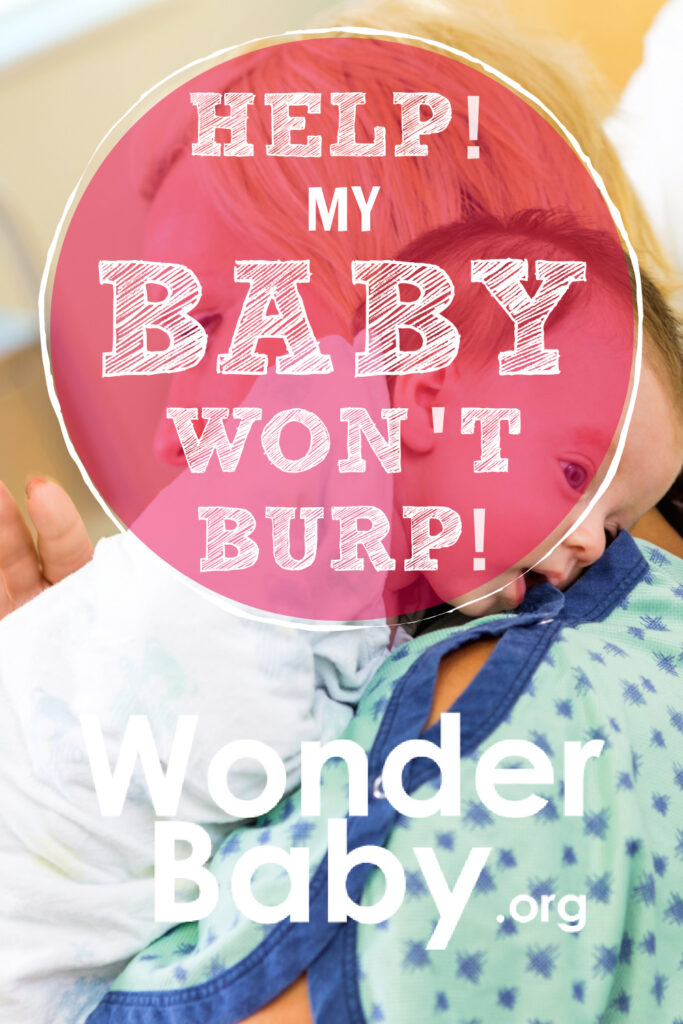
The information WonderBaby provides is not intended to be, and does not constitute, medical or other health advice or diagnosis and should not be used as such. Always consult with a qualified medical professional about your specific circumstances.
Related Posts
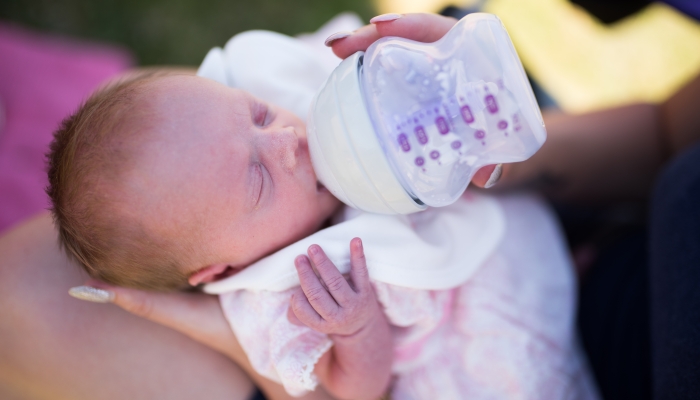
Feeding and Eating, Special Needs
Feeding Therapy Approaches for Infants with Special Needs
Many children with special needs have feeding difficulties. Working with a speech therapist, being patient, and experimenting with textures can help.

Feeding and Eating
Unexpected Foods That Cause Allergen Cross-Reactivity
A variety of unexpected foods and environmental substances can trigger an allergic reaction through cross-reactivity to food proteins.

Feeding and Eating
Easing Anxiety for Families Facing Food Allergies
Ongoing physical preparations and speaking openly about anxiety can ease the transition from diagnosis to living well with a food allergy.